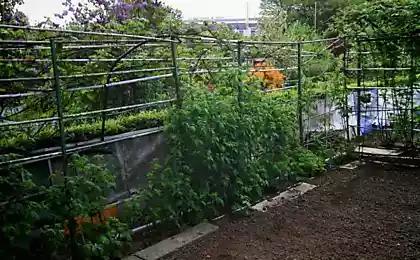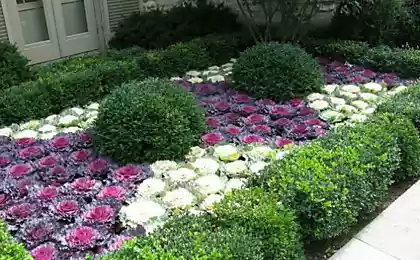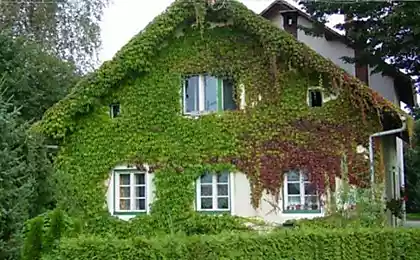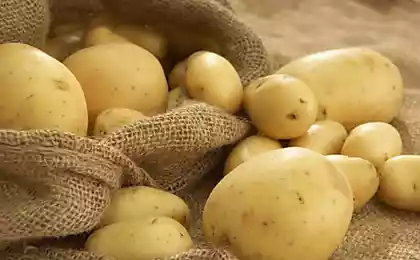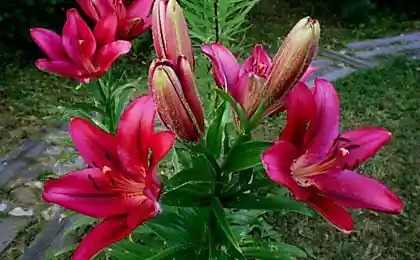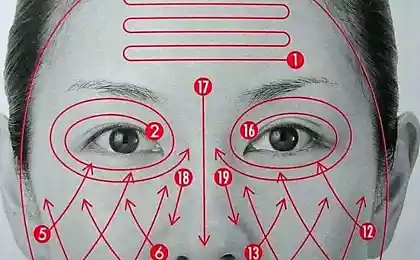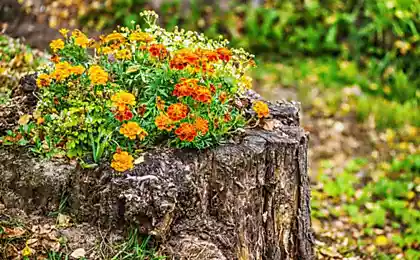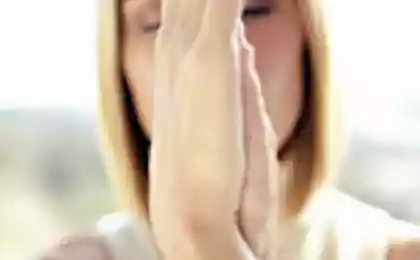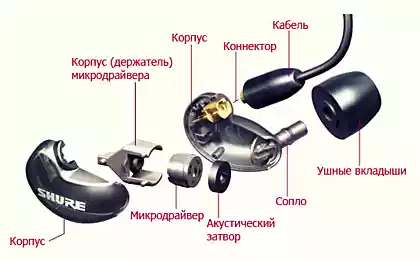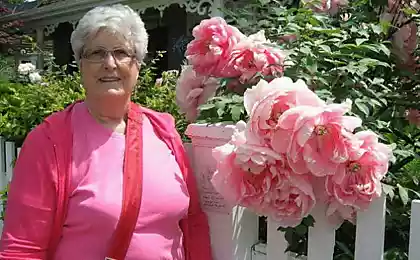443
Plant thujopsis on the site: maintenance free and can live 500 years!
In Japan, thujopsis is decorated with Buddhist and Shinto temples, we have – plots. Among other things, to thujopsis can live for over 500 years. What is not a family heirloom?
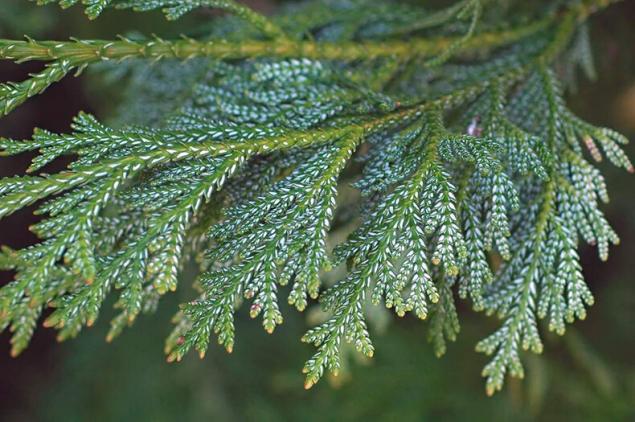
In nature and in culture.
Thujopsis is belongs to the cypress family. The genus is represented by only one species – the schedule can lead to drooping (chisel, Japanese).
It is a monoecious conifer with reddish-brown exfoliating bark grows in the humid forests of Japan, the mountains rising to a considerable height. There are two forms: the Northern (tree up to 30 m with densely arranged branches and dense pyramidal crown) and South (low narrow-pyramidal tree with a thin trunk and drooping shoots).
Evergreen height 10 to 15 m decorate religious temples, gardens and parks. The fragrant wood of thujopsis lightweight and durable. It is perfectly treatable. The Japanese use it in shipbuilding and in the construction of bridges, etc.
Thujopsis is often confused with the thuja, although they have many differences. From thujopsis branches wider, tightly pressed to escape scaly needles "juicier". On top of it is shiny, bottom is silver with a distinct white stomata. When crushed the needles there is a pleasant aroma. Many arborvitae turn brown in the winter, and thujopsis slightly change the usual color, only the tips of the branches.
In the culture of conifers, most often in the form of a shrub. My thujopsis recently began to actively grow in width. At the age of ten, his height of about 90 cm, and the diameter of coverage – 1.3 m Thewiki are considered slow-growing conifers. Their height at the age of thirty usually does not exceed 2 m (in the culture).
Interesting some of the garden forms and varieties. Dwarf "Nana", height up to 60 cm has a flat-top crown. This low-growing shrub with small scale-like needles grows very slowly. It looks good among the stones, imitating rock, garden containers and even in flower pots. Another low form of "Graziosa" loose embellished curved branches. Form "Aurea" is characterized by a yellowing of needles, "Variegata" – diversity. Columnar form has short shoots; fold – branches, hanging in a fan; comb – wavy comb shoots. There is a weeping form.

How to care?
The history of my relationship with thujopsis is evolved according to the scenario "there would be no happiness, Yes the misfortune has helped". For several years he didn't want to put up with those conditions of life that I've created on the beautiful open place. In dry summers the plant looked half-dead, revived only closer to the fall.
In the spring it became clear that the huge drifts of snow, that I diligently poured to protect from frost, bring more harm than good. Lay on the ground uprooted branch. Thujopsis is stopped to act up when I waved a hand at him and removed the "out of sight".
The new location was bounded on all sides: from the East – metal slats of the fence and growing behind the willows; the opposite – high thujas; the South tees. In this small cavern thujopsis felt surprisingly comfortable, the suffering has not disappeared. Today it is a strong softwood aggressively asserting their rights to a larger territory.
What is it like Treviso in a new place? Importantly, this squeezed on all sides half-shaded place formed a suitable microclimate, and thujopsis is by its nature needs in humid air. If it has been Sunny, then I would have to regularly moisten the soil and spray the crown. Groundwater at the site overlain by deep enough, so the water is not stagnant. Fatal waterlogged soil no. From time to time, I trimmed the soft grass growing around thujopsis. Another option is mulching with wood chips or stale peat.
Trevico suitable soil, sufficiently balanced in its composition. On my site loose fertile loam is refined peat moss, Mature compost, sand and... granular fertilizer for conifers. Once per season I fed these fertilizers thujopsis, avoiding overdose. In any case, you cannot make fresh manure.
In a secluded spot, where he settled in conifers in winter it accumulates much snow. It partially covers the plant. Wymarzony in all that time never had. The sad experience with the heavy snow, crippling thujopsis, became for me a warning against similar mistakes in the future (I plan to plant some new garden forms). On open places it is necessary not to pile up the snow, and cover for the winter, tree trunks circles of young plants with dry leaves, peat or spruce branches to use.
Thujopsis is easily tolerate transplanting to a new location in the spring and early summer. At other times it can be transplanted (or, more precisely, to handle) only from a dense lump of earth. Planting holes with a depth of 60-70 cm are filled with a suitable composition of the potting mix, after which it is compacted and sheds water well. In wet areas need drainage. It can be done even from the broken bricks covered with a layer of 10 cm.
Pruning thujopsis needs only when necessary to remove dead or broken branches. Sometimes you have to adjust too broad crown.
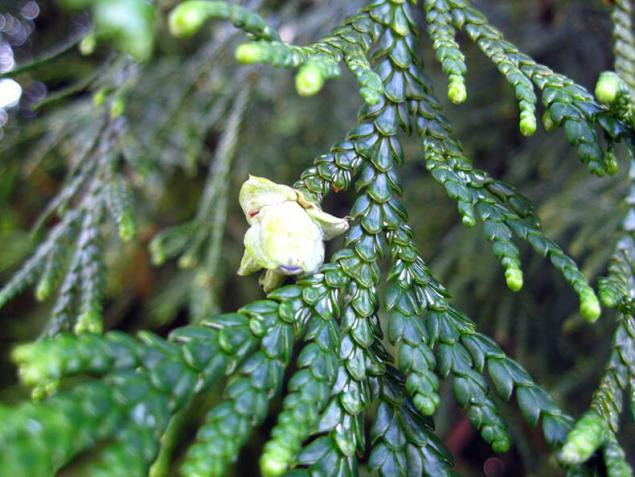
How to propagate?
Thujopsis is usually propagated by cuttings, rooting cuttings and grafting on the fifth.The main condition under which the cuttings are rooted, high humidity and diffused light, it is not forbidden the use of stimulants rooting. In the first winter of the weak seedlings to take to the room, and a stronger left in the open ground, insulated in case of severe frosts. Seed propagation is possible, if you can buy the seeds – because in the culture of thujopsis rarely bears fruit.
Planting: the best planting time is spring (mid April). The distance between plants in group plantings of 0.5 — 1.5 m depending on the age and height of seedlings. Pit depth 60 — 70 cm When planting is necessary to keep the com near the roots and not to disturb the mycorrhiza. Soil mix: peat compost, turf ground, sand in the ratio 3:2:2. The desired drainage of broken bricks with a layer 10 — 15 cm.
Care: when planting in the hole making NPK (200 — 300 g) and mixed thoroughly with the earth. Two years later, regularly once spring make a complex fertilizer "Kemira Universal" (20 g/m2). Drought tolerant, hot and dry summers, it is recommended to water and spray plants, making for 8 — 10 liters of water for each adult plant, if the surface layer of soil has dried up to 5 cm (this is set by dip fingers in the loose soil).
Free air conditioning
How to make outdoor fireplace with his hands
Fall under winter cool tree trunks dug bayonet spade (every three years). Only mulch young plantings with a layer of peat or wood chips 5 — 7 cm Cut and trimming is carried out only for the formation of crown, if necessary. Dry branches are cut. Young seedlings were quenched gradually. Covering them with spruce branches in the winter, and tree trunks circles sheet, peat layer of 12 — 15 cm.
Last spring, or remove the shovel from plants. If planting was conducted in late autumn, the seedlings better in the winter to cover with paper or fabric tape that should be mounted on the frame so that they are not in contact with the plants. Mature plants are quite winter-hardy and winter do not change the color of the needles. published
P. S. And remember, only by changing their consumption — together we change the world! ©
Source: animalworld.com.ua/news/Tuevik-perezhivet-ne-odno-pokolenie-hozjaev

In nature and in culture.
Thujopsis is belongs to the cypress family. The genus is represented by only one species – the schedule can lead to drooping (chisel, Japanese).
It is a monoecious conifer with reddish-brown exfoliating bark grows in the humid forests of Japan, the mountains rising to a considerable height. There are two forms: the Northern (tree up to 30 m with densely arranged branches and dense pyramidal crown) and South (low narrow-pyramidal tree with a thin trunk and drooping shoots).
Evergreen height 10 to 15 m decorate religious temples, gardens and parks. The fragrant wood of thujopsis lightweight and durable. It is perfectly treatable. The Japanese use it in shipbuilding and in the construction of bridges, etc.
Thujopsis is often confused with the thuja, although they have many differences. From thujopsis branches wider, tightly pressed to escape scaly needles "juicier". On top of it is shiny, bottom is silver with a distinct white stomata. When crushed the needles there is a pleasant aroma. Many arborvitae turn brown in the winter, and thujopsis slightly change the usual color, only the tips of the branches.
In the culture of conifers, most often in the form of a shrub. My thujopsis recently began to actively grow in width. At the age of ten, his height of about 90 cm, and the diameter of coverage – 1.3 m Thewiki are considered slow-growing conifers. Their height at the age of thirty usually does not exceed 2 m (in the culture).
Interesting some of the garden forms and varieties. Dwarf "Nana", height up to 60 cm has a flat-top crown. This low-growing shrub with small scale-like needles grows very slowly. It looks good among the stones, imitating rock, garden containers and even in flower pots. Another low form of "Graziosa" loose embellished curved branches. Form "Aurea" is characterized by a yellowing of needles, "Variegata" – diversity. Columnar form has short shoots; fold – branches, hanging in a fan; comb – wavy comb shoots. There is a weeping form.

How to care?
The history of my relationship with thujopsis is evolved according to the scenario "there would be no happiness, Yes the misfortune has helped". For several years he didn't want to put up with those conditions of life that I've created on the beautiful open place. In dry summers the plant looked half-dead, revived only closer to the fall.
In the spring it became clear that the huge drifts of snow, that I diligently poured to protect from frost, bring more harm than good. Lay on the ground uprooted branch. Thujopsis is stopped to act up when I waved a hand at him and removed the "out of sight".
The new location was bounded on all sides: from the East – metal slats of the fence and growing behind the willows; the opposite – high thujas; the South tees. In this small cavern thujopsis felt surprisingly comfortable, the suffering has not disappeared. Today it is a strong softwood aggressively asserting their rights to a larger territory.
What is it like Treviso in a new place? Importantly, this squeezed on all sides half-shaded place formed a suitable microclimate, and thujopsis is by its nature needs in humid air. If it has been Sunny, then I would have to regularly moisten the soil and spray the crown. Groundwater at the site overlain by deep enough, so the water is not stagnant. Fatal waterlogged soil no. From time to time, I trimmed the soft grass growing around thujopsis. Another option is mulching with wood chips or stale peat.
Trevico suitable soil, sufficiently balanced in its composition. On my site loose fertile loam is refined peat moss, Mature compost, sand and... granular fertilizer for conifers. Once per season I fed these fertilizers thujopsis, avoiding overdose. In any case, you cannot make fresh manure.
In a secluded spot, where he settled in conifers in winter it accumulates much snow. It partially covers the plant. Wymarzony in all that time never had. The sad experience with the heavy snow, crippling thujopsis, became for me a warning against similar mistakes in the future (I plan to plant some new garden forms). On open places it is necessary not to pile up the snow, and cover for the winter, tree trunks circles of young plants with dry leaves, peat or spruce branches to use.
Thujopsis is easily tolerate transplanting to a new location in the spring and early summer. At other times it can be transplanted (or, more precisely, to handle) only from a dense lump of earth. Planting holes with a depth of 60-70 cm are filled with a suitable composition of the potting mix, after which it is compacted and sheds water well. In wet areas need drainage. It can be done even from the broken bricks covered with a layer of 10 cm.
Pruning thujopsis needs only when necessary to remove dead or broken branches. Sometimes you have to adjust too broad crown.

How to propagate?
Thujopsis is usually propagated by cuttings, rooting cuttings and grafting on the fifth.The main condition under which the cuttings are rooted, high humidity and diffused light, it is not forbidden the use of stimulants rooting. In the first winter of the weak seedlings to take to the room, and a stronger left in the open ground, insulated in case of severe frosts. Seed propagation is possible, if you can buy the seeds – because in the culture of thujopsis rarely bears fruit.
Planting: the best planting time is spring (mid April). The distance between plants in group plantings of 0.5 — 1.5 m depending on the age and height of seedlings. Pit depth 60 — 70 cm When planting is necessary to keep the com near the roots and not to disturb the mycorrhiza. Soil mix: peat compost, turf ground, sand in the ratio 3:2:2. The desired drainage of broken bricks with a layer 10 — 15 cm.
Care: when planting in the hole making NPK (200 — 300 g) and mixed thoroughly with the earth. Two years later, regularly once spring make a complex fertilizer "Kemira Universal" (20 g/m2). Drought tolerant, hot and dry summers, it is recommended to water and spray plants, making for 8 — 10 liters of water for each adult plant, if the surface layer of soil has dried up to 5 cm (this is set by dip fingers in the loose soil).
Free air conditioning
How to make outdoor fireplace with his hands
Fall under winter cool tree trunks dug bayonet spade (every three years). Only mulch young plantings with a layer of peat or wood chips 5 — 7 cm Cut and trimming is carried out only for the formation of crown, if necessary. Dry branches are cut. Young seedlings were quenched gradually. Covering them with spruce branches in the winter, and tree trunks circles sheet, peat layer of 12 — 15 cm.
Last spring, or remove the shovel from plants. If planting was conducted in late autumn, the seedlings better in the winter to cover with paper or fabric tape that should be mounted on the frame so that they are not in contact with the plants. Mature plants are quite winter-hardy and winter do not change the color of the needles. published
P. S. And remember, only by changing their consumption — together we change the world! ©
Source: animalworld.com.ua/news/Tuevik-perezhivet-ne-odno-pokolenie-hozjaev
Non-boring house: pink quartz and all shades of pink in the interior of your house
How to grow lingonberries in the garden



